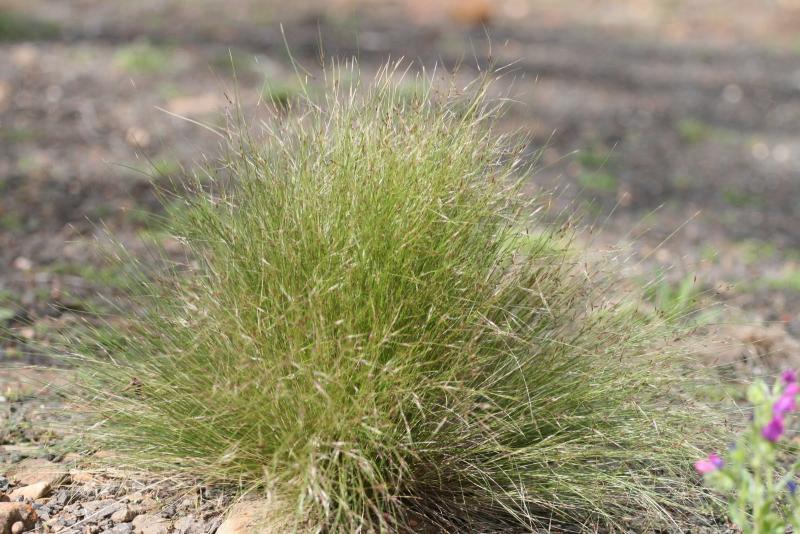
Now is the right time to check your property for the noxious weed serrated tussock (Nassella trichotoma). The recent rains and warm winter in some parts of Victoria have been good for crops, but unfortunately, also good for the growth of serrated tussock. Controlling serrated tussock before the plant goes to seed is critical to prevent further spread, lost productivity and increased control requirements.
It’s believed serrated tussock now covers more than 140,000 hectares of land in Victoria. Large infestations require ongoing management and the integration of a number of control techniques.
What it looks like
Before flowering serrated tussock has a lime green appearance. When flowering the flowerheads have a distinctive purple colour developing as the seeds ripen in late spring and early summer. These features help serrated tussock stand out from the native tussock grasses.
Serrated tussock has a fine leaf and will roll smoothly between the index finger and thumb, while native tussocks feel as though they have flat edges. The leaves also feel rough when you run your fingers downwards due to fine serrations. A mature serrated tussock plant can produce thousands of seeds in a season, blowing up to 20 kilometres from the parent plant.
How to control it
Controlling mature serrated tussock plants before they flower and seed can be done with registered herbicide, manual removal or cultivation. Having a healthy pasture and competitive ground cover is one of the most important aspects to weed management. Serrated tussock is a prime example of a weed that does not like competition and well established pastures.
Find out more
The VSTWP has developed an online video and information sheet to help landowners identify the unwanted grass. Watch the video.
